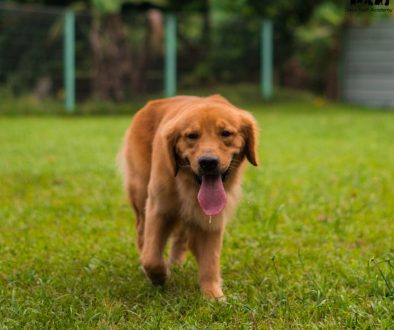5 Essential Tips for Walking Your Dog Safely
1. Stay Alert
- Awareness of Surroundings: Always be vigilant. Watch out for cars, bicycles, joggers, and other dogs. Sudden movements or loud noises can startle your dog, so be prepared for the unexpected.
- Understanding Your Dog: Dogs communicate through body language. Signs of anxiety, such as cowering, pulling away, or barking, indicate your dog may feel threatened. If you notice these behaviors, calmly remove your dog from the situation and find a quieter area.
2. Use Proper Equipment
- Leash and Harness: A sturdy, non-retractable leash gives you better control. A well-fitting harness distributes pressure evenly across your dog’s body, reducing the risk of injury, especially for strong pullers.
- Visibility Gear: In low-light conditions, reflective or LED collars and leashes make your dog more visible to drivers and pedestrians. This is especially important during early morning or late evening walks.
- Safety Accessories: Consider a muzzle if your dog has a history of aggression or anxiety around other dogs. Training aids can help manage their behavior safely.
3. Monitor Temperature
- Weather Awareness: Check the forecast before heading out. Hot weather can cause overheating, while cold can lead to hypothermia, particularly for small or short-haired breeds.
- Pavement Temperature: Malaysia’s weather can be extremely hot and humid. To test the temperature, place your hand on the ground; if it’s too hot for you, it’s too hot for your dog’s paws.
- Hydration: Always bring fresh water for both you and your dog, and take frequent breaks to prevent overheating.
4. Keep Your Dog on a Leash
- Control and Safety: Leashing prevents your dog from running into traffic or approaching unknown dogs or people, avoiding aggressive encounters.
- Using a Long Leash: In open areas like parks, a longer leash allows your dog to explore while still keeping control, satisfying curiosity and giving a sense of freedom and adventure.
5. Know Your Route
- Planning Ahead: Familiarize yourself with walking routes. Avoid areas with heavy traffic or known aggressive animals. Opt for quieter streets or designated dog parks.
- Dog-Friendly Areas: Research local parks and trails with designated off-leash areas, providing safe spaces for socialization and exercise.
By following these tips, you can make walks safer and more enjoyable for your dog. Regular, safe walks improve physical health and strengthen your bond.

